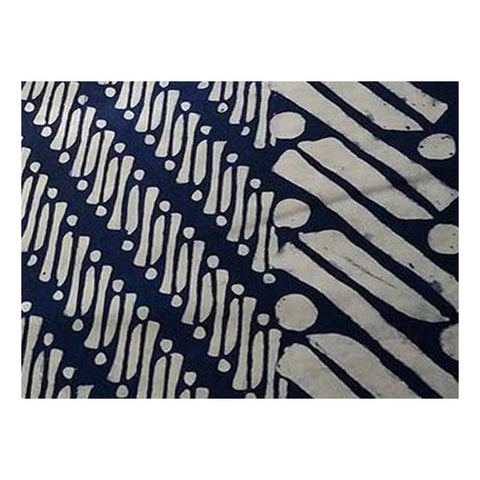Batik is a method of dyeing patterned fabric that is covered with wax so the colour won’t transfer directly.
Before landed in Indonesia, batik has been used in regions along the trade road between Egypt and India. In Indonesia, the oldest batik textile dated since 1 Century was found in Toraja Regency in Sulawesi island. The Batik designation was created in Java island since 8C. Based on the book of Old Javanese Kakawin Ramayana, Batik comes from the word ‘tika’ that means sacred painting.
Batik is also created by Javanese words ‘amba’ that means wide and ‘titik’ that means create dots to form lines. Batik also has other meaning that refers to Javanese phrase ‘mbatik manah’ that means to paint with whole heart. Since 16C, the Javanese word ‘Batik’ is used worldwide to indicate wax-resist dyeing technique in textile production.
The spread of Batik for centuries made it become a common cultural practice that weaves the relationship between countries in South East Asia (Indonesia, Thailand, Singapore, Malaysia, Vietnam, Philippines, Brunei, Myanmar (Burma), Cambodia, and Laos).
Through Indonesian public participation, Batik was inscribed as UNESCO intangible cultural heritage of humanity in 2009. The inscription addressed to the authenticity and exceptional cultural values that are deeply embedded in Batik textile heritage. Since 2009, Indonesia officially celebrates National Batik Day every October 2nd where people wear Batik on that day.
Today, the batik safeguarding practice is increasing nationally and becomes an inspiration to many textile craft artisans around the world. In 2015, Batik has become the core livelihood for 47,775 SMEs in Indonesia and 199,744 people who work as craftsmen, designers, tailors, etc.). The inscription of Batik as an UNESCO intangible cultural heritage in 2009 became a shared responsibility among national/international stakeholders in order to protect the extraordinary cultural elements inherent in this living heritage for future generations.
Quoted from iWareBatik.Org



